Project Management Report: Warehouse Restructure and Management
VerifiedAdded on 2019/12/03
|22
|5358
|218
Report
AI Summary
This report delves into the core concepts of project management, using a case study of a food manufacturing company's warehouse restructure as a practical example. It begins with an introduction to project management and its importance, followed by an analysis of the project's objectives, including increasing sales, enhancing profitability, and improving inventory systems. The report then outlines the project's sub-division using a Work Breakdown Structure (WBS), estimates time, resources, and costs, and justifies the use of the PRINCE2 methodology. It assesses the project's feasibility from technical, economic, legal, operational, and scheduling perspectives. Furthermore, the report details the structure for managing and administering the project, defines the roles and responsibilities of the project manager, and presents a comprehensive project plan including a Gantt chart and network diagram. The report also examines alternative project team structures, the interpersonal skills needed for effective project management, quality management processes, and procedures for managing project change proposals. It concludes by identifying potential issues and risks, designing monitoring and appraisal systems, and control systems to manage issues during the project's final stages. The report highlights the significance of post-implementation reports for future project improvements.
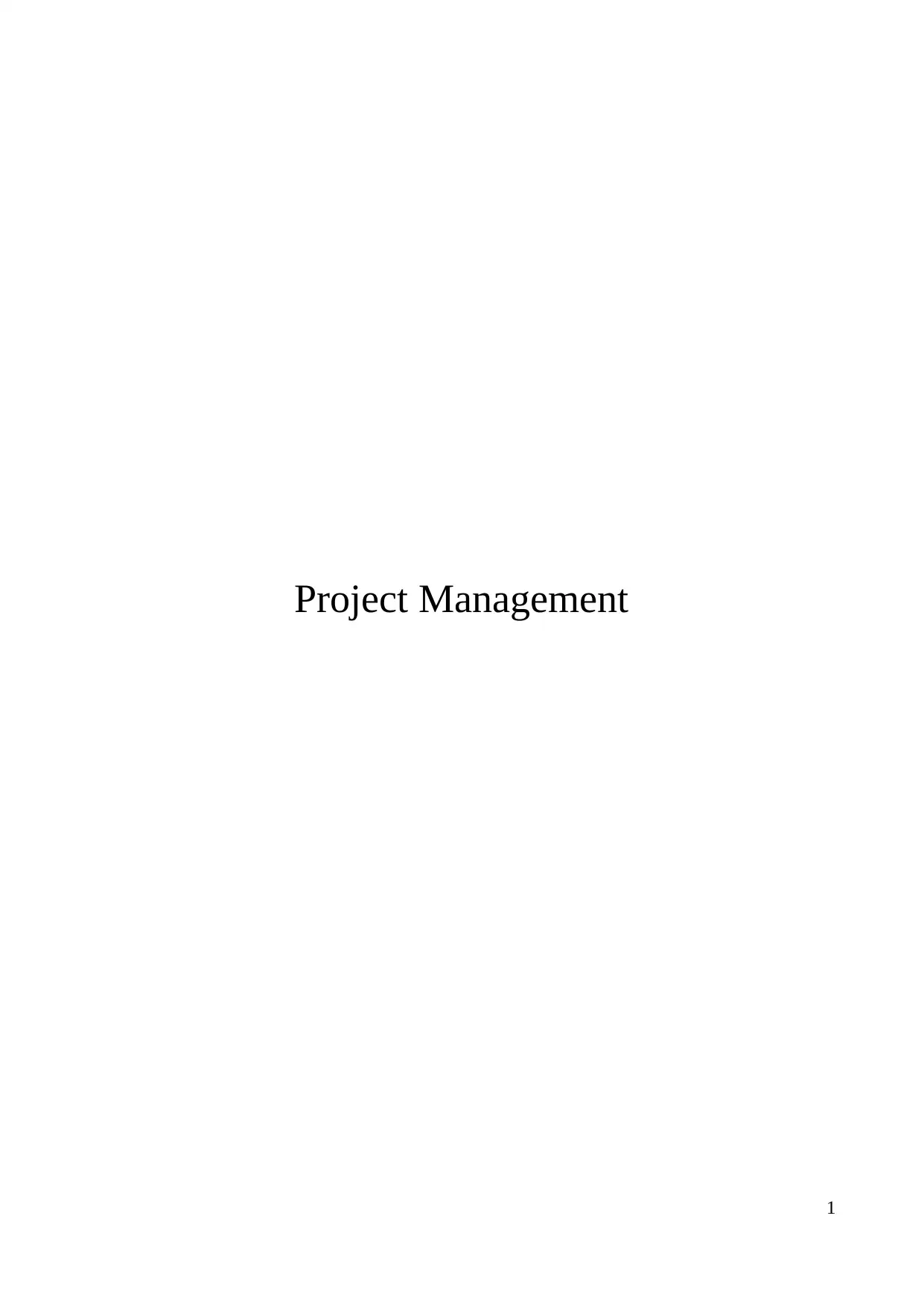
Project Management
1
1
Paraphrase This Document
Need a fresh take? Get an instant paraphrase of this document with our AI Paraphraser
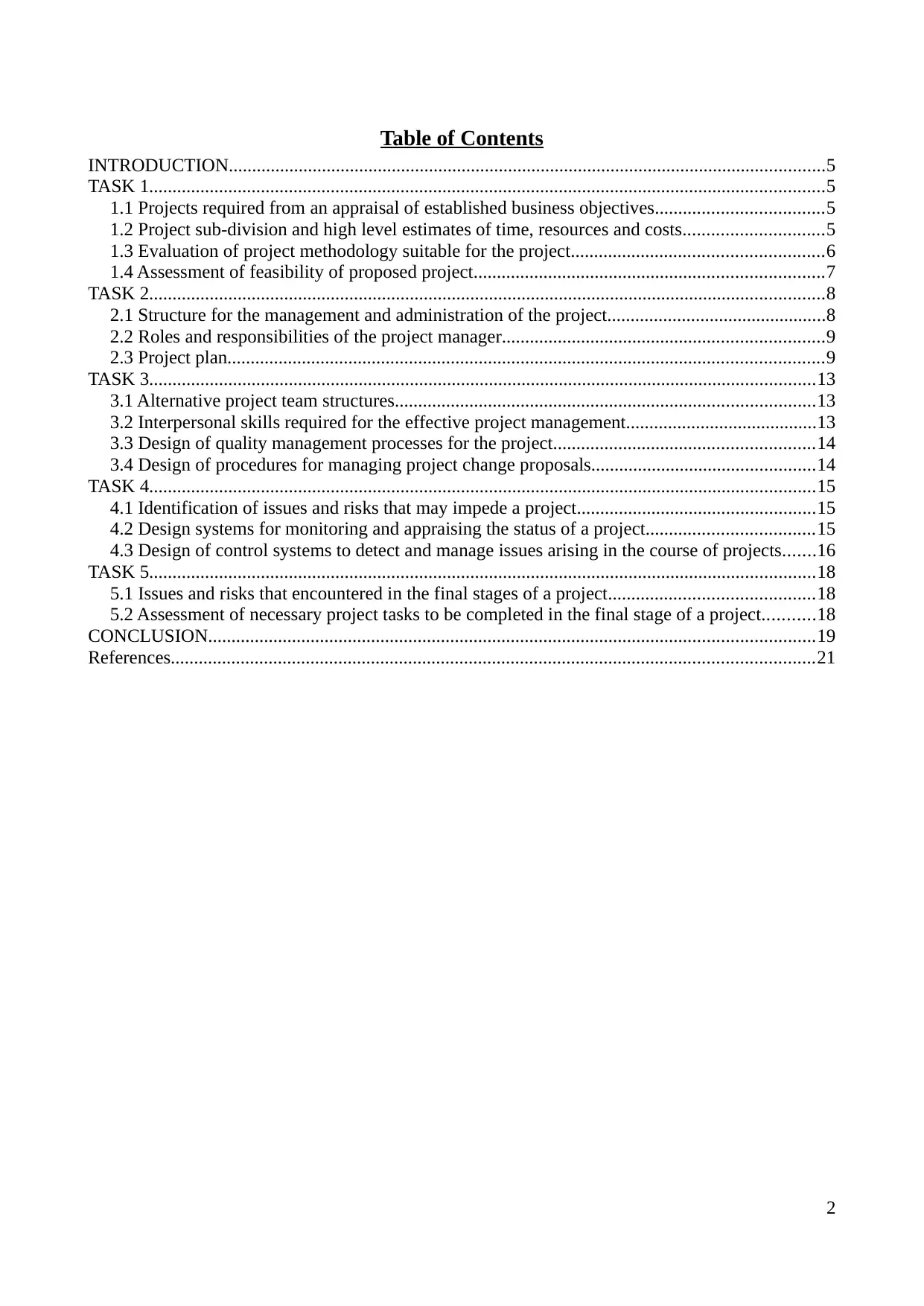
Table of Contents
INTRODUCTION................................................................................................................................5
TASK 1.................................................................................................................................................5
1.1 Projects required from an appraisal of established business objectives....................................5
1.2 Project sub-division and high level estimates of time, resources and costs..............................5
1.3 Evaluation of project methodology suitable for the project......................................................6
1.4 Assessment of feasibility of proposed project...........................................................................7
TASK 2.................................................................................................................................................8
2.1 Structure for the management and administration of the project...............................................8
2.2 Roles and responsibilities of the project manager.....................................................................9
2.3 Project plan................................................................................................................................9
TASK 3...............................................................................................................................................13
3.1 Alternative project team structures..........................................................................................13
3.2 Interpersonal skills required for the effective project management.........................................13
3.3 Design of quality management processes for the project........................................................14
3.4 Design of procedures for managing project change proposals................................................14
TASK 4...............................................................................................................................................15
4.1 Identification of issues and risks that may impede a project...................................................15
4.2 Design systems for monitoring and appraising the status of a project....................................15
4.3 Design of control systems to detect and manage issues arising in the course of projects.......16
TASK 5...............................................................................................................................................18
5.1 Issues and risks that encountered in the final stages of a project............................................18
5.2 Assessment of necessary project tasks to be completed in the final stage of a project...........18
CONCLUSION..................................................................................................................................19
References..........................................................................................................................................21
2
INTRODUCTION................................................................................................................................5
TASK 1.................................................................................................................................................5
1.1 Projects required from an appraisal of established business objectives....................................5
1.2 Project sub-division and high level estimates of time, resources and costs..............................5
1.3 Evaluation of project methodology suitable for the project......................................................6
1.4 Assessment of feasibility of proposed project...........................................................................7
TASK 2.................................................................................................................................................8
2.1 Structure for the management and administration of the project...............................................8
2.2 Roles and responsibilities of the project manager.....................................................................9
2.3 Project plan................................................................................................................................9
TASK 3...............................................................................................................................................13
3.1 Alternative project team structures..........................................................................................13
3.2 Interpersonal skills required for the effective project management.........................................13
3.3 Design of quality management processes for the project........................................................14
3.4 Design of procedures for managing project change proposals................................................14
TASK 4...............................................................................................................................................15
4.1 Identification of issues and risks that may impede a project...................................................15
4.2 Design systems for monitoring and appraising the status of a project....................................15
4.3 Design of control systems to detect and manage issues arising in the course of projects.......16
TASK 5...............................................................................................................................................18
5.1 Issues and risks that encountered in the final stages of a project............................................18
5.2 Assessment of necessary project tasks to be completed in the final stage of a project...........18
CONCLUSION..................................................................................................................................19
References..........................................................................................................................................21
2
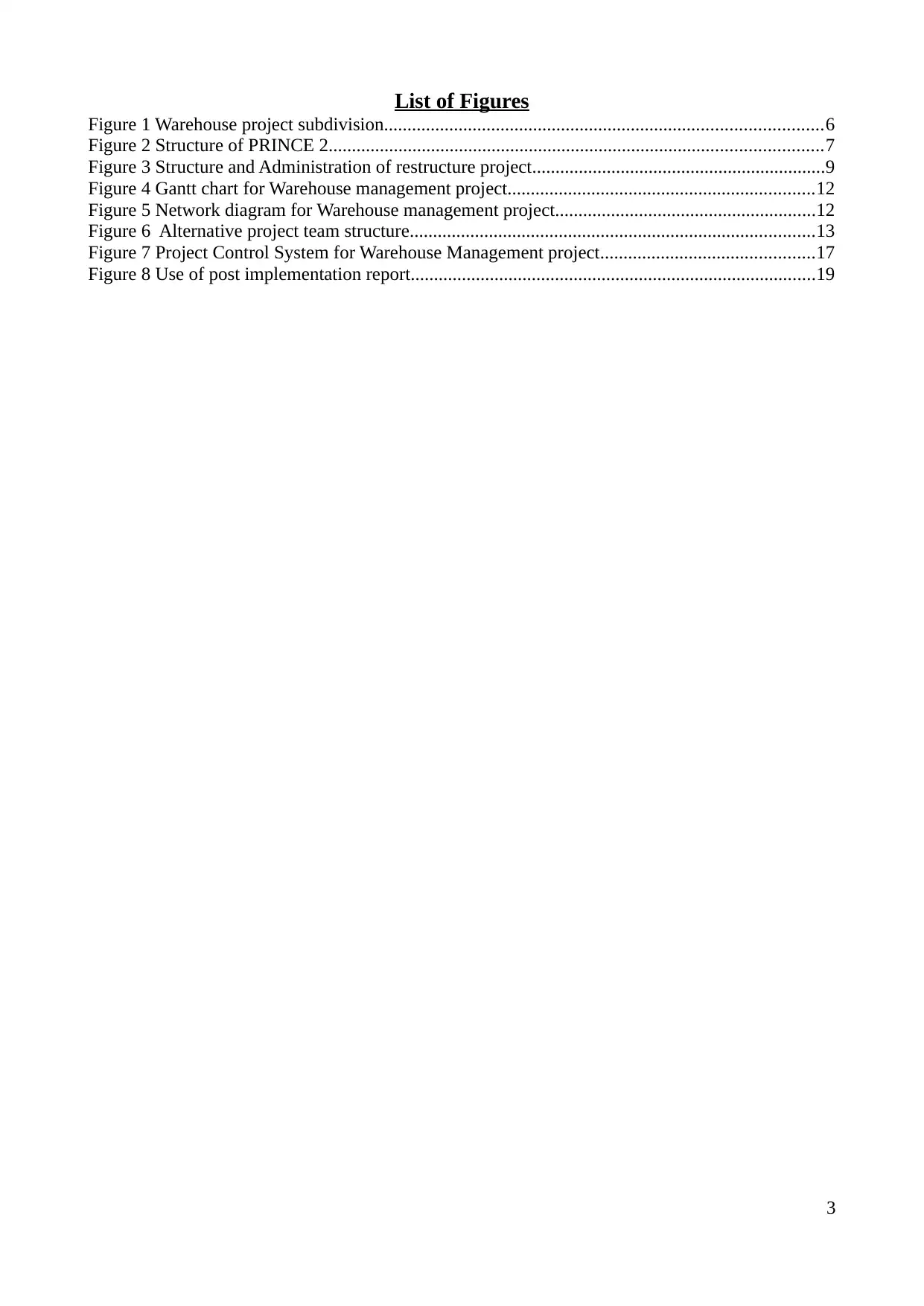
List of Figures
Figure 1 Warehouse project subdivision..............................................................................................6
Figure 2 Structure of PRINCE 2..........................................................................................................7
Figure 3 Structure and Administration of restructure project...............................................................9
Figure 4 Gantt chart for Warehouse management project..................................................................12
Figure 5 Network diagram for Warehouse management project........................................................12
Figure 6 Alternative project team structure.......................................................................................13
Figure 7 Project Control System for Warehouse Management project..............................................17
Figure 8 Use of post implementation report.......................................................................................19
3
Figure 1 Warehouse project subdivision..............................................................................................6
Figure 2 Structure of PRINCE 2..........................................................................................................7
Figure 3 Structure and Administration of restructure project...............................................................9
Figure 4 Gantt chart for Warehouse management project..................................................................12
Figure 5 Network diagram for Warehouse management project........................................................12
Figure 6 Alternative project team structure.......................................................................................13
Figure 7 Project Control System for Warehouse Management project..............................................17
Figure 8 Use of post implementation report.......................................................................................19
3
⊘ This is a preview!⊘
Do you want full access?
Subscribe today to unlock all pages.

Trusted by 1+ million students worldwide

List of Tables
4
4
Paraphrase This Document
Need a fresh take? Get an instant paraphrase of this document with our AI Paraphraser
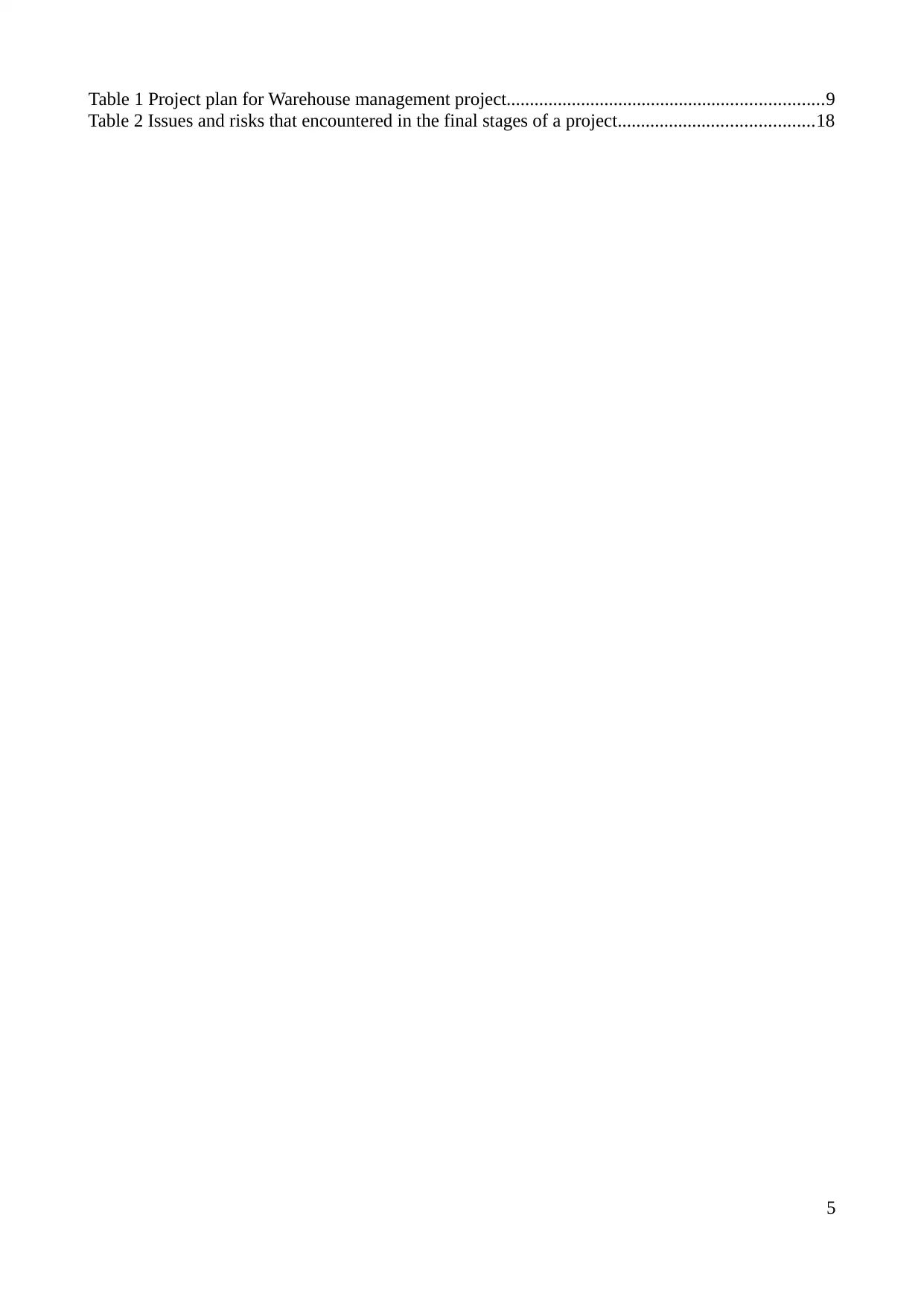
Table 1 Project plan for Warehouse management project....................................................................9
Table 2 Issues and risks that encountered in the final stages of a project..........................................18
5
Table 2 Issues and risks that encountered in the final stages of a project..........................................18
5
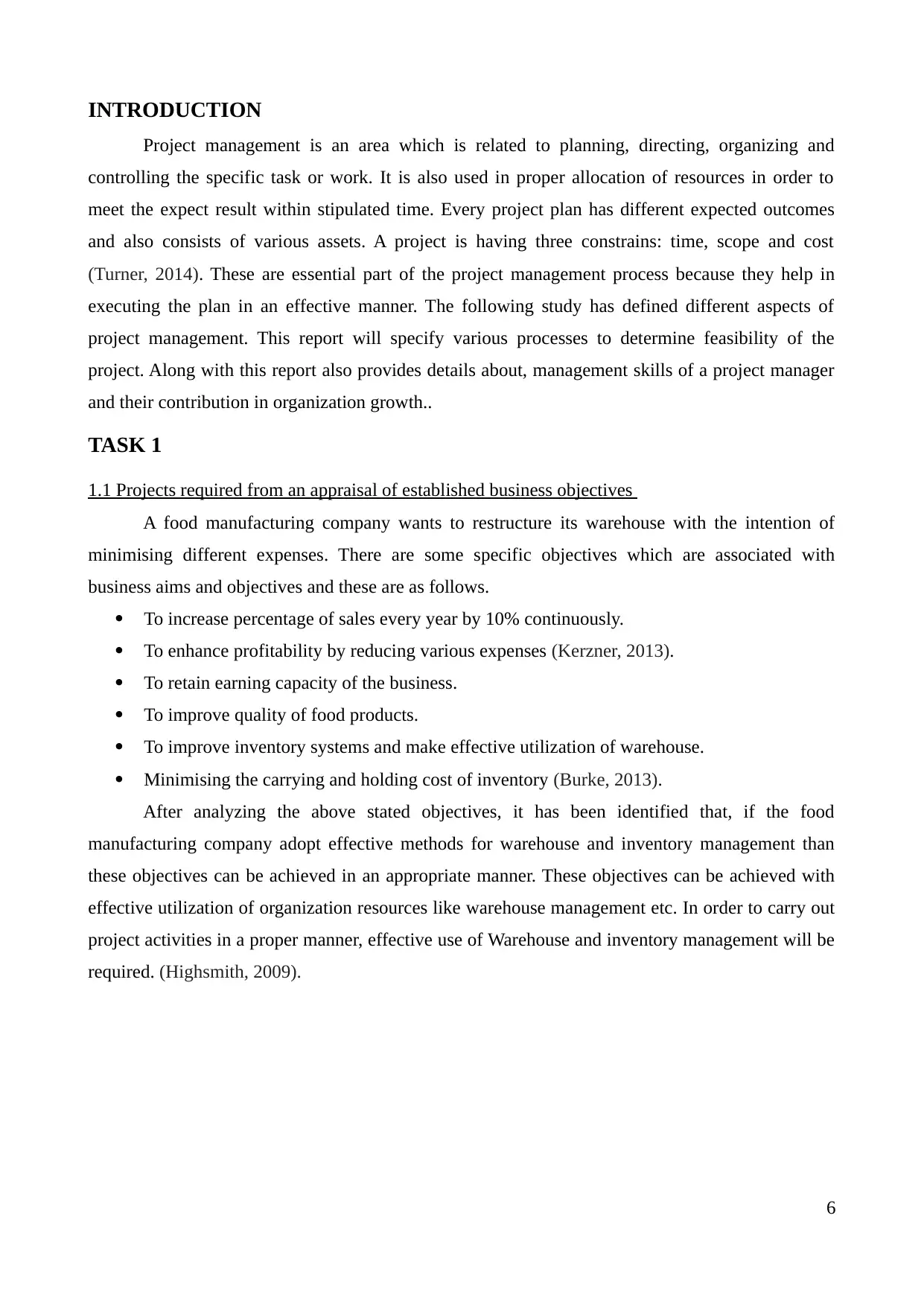
INTRODUCTION
Project management is an area which is related to planning, directing, organizing and
controlling the specific task or work. It is also used in proper allocation of resources in order to
meet the expect result within stipulated time. Every project plan has different expected outcomes
and also consists of various assets. A project is having three constrains: time, scope and cost
(Turner, 2014). These are essential part of the project management process because they help in
executing the plan in an effective manner. The following study has defined different aspects of
project management. This report will specify various processes to determine feasibility of the
project. Along with this report also provides details about, management skills of a project manager
and their contribution in organization growth..
TASK 1
1.1 Projects required from an appraisal of established business objectives
A food manufacturing company wants to restructure its warehouse with the intention of
minimising different expenses. There are some specific objectives which are associated with
business aims and objectives and these are as follows.
To increase percentage of sales every year by 10% continuously.
To enhance profitability by reducing various expenses (Kerzner, 2013).
To retain earning capacity of the business.
To improve quality of food products.
To improve inventory systems and make effective utilization of warehouse.
Minimising the carrying and holding cost of inventory (Burke, 2013).
After analyzing the above stated objectives, it has been identified that, if the food
manufacturing company adopt effective methods for warehouse and inventory management than
these objectives can be achieved in an appropriate manner. These objectives can be achieved with
effective utilization of organization resources like warehouse management etc. In order to carry out
project activities in a proper manner, effective use of Warehouse and inventory management will be
required. (Highsmith, 2009).
6
Project management is an area which is related to planning, directing, organizing and
controlling the specific task or work. It is also used in proper allocation of resources in order to
meet the expect result within stipulated time. Every project plan has different expected outcomes
and also consists of various assets. A project is having three constrains: time, scope and cost
(Turner, 2014). These are essential part of the project management process because they help in
executing the plan in an effective manner. The following study has defined different aspects of
project management. This report will specify various processes to determine feasibility of the
project. Along with this report also provides details about, management skills of a project manager
and their contribution in organization growth..
TASK 1
1.1 Projects required from an appraisal of established business objectives
A food manufacturing company wants to restructure its warehouse with the intention of
minimising different expenses. There are some specific objectives which are associated with
business aims and objectives and these are as follows.
To increase percentage of sales every year by 10% continuously.
To enhance profitability by reducing various expenses (Kerzner, 2013).
To retain earning capacity of the business.
To improve quality of food products.
To improve inventory systems and make effective utilization of warehouse.
Minimising the carrying and holding cost of inventory (Burke, 2013).
After analyzing the above stated objectives, it has been identified that, if the food
manufacturing company adopt effective methods for warehouse and inventory management than
these objectives can be achieved in an appropriate manner. These objectives can be achieved with
effective utilization of organization resources like warehouse management etc. In order to carry out
project activities in a proper manner, effective use of Warehouse and inventory management will be
required. (Highsmith, 2009).
6
⊘ This is a preview!⊘
Do you want full access?
Subscribe today to unlock all pages.

Trusted by 1+ million students worldwide
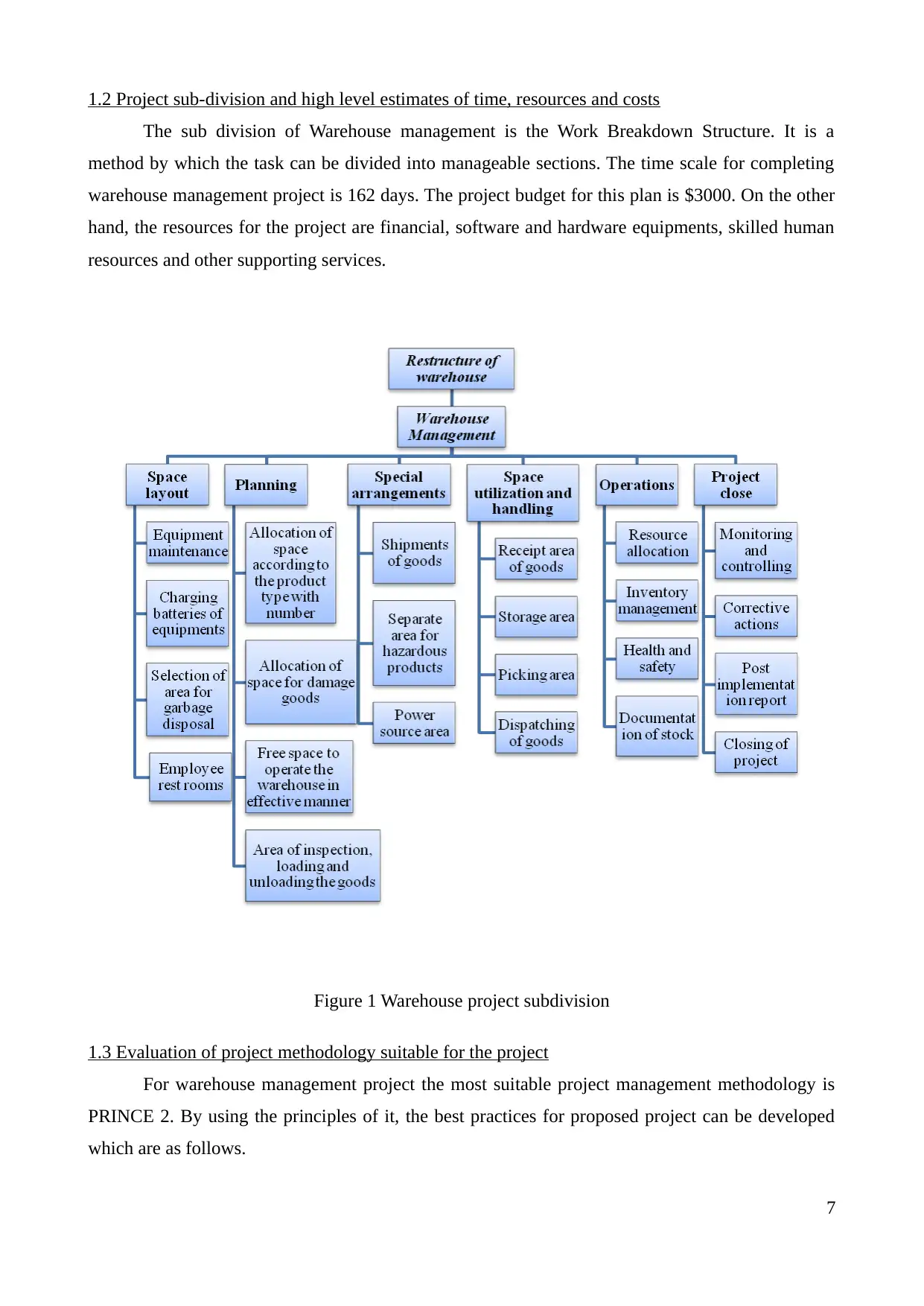
1.2 Project sub-division and high level estimates of time, resources and costs
The sub division of Warehouse management is the Work Breakdown Structure. It is a
method by which the task can be divided into manageable sections. The time scale for completing
warehouse management project is 162 days. The project budget for this plan is $3000. On the other
hand, the resources for the project are financial, software and hardware equipments, skilled human
resources and other supporting services.
Figure 1 Warehouse project subdivision
1.3 Evaluation of project methodology suitable for the project
For warehouse management project the most suitable project management methodology is
PRINCE 2. By using the principles of it, the best practices for proposed project can be developed
which are as follows.
7
The sub division of Warehouse management is the Work Breakdown Structure. It is a
method by which the task can be divided into manageable sections. The time scale for completing
warehouse management project is 162 days. The project budget for this plan is $3000. On the other
hand, the resources for the project are financial, software and hardware equipments, skilled human
resources and other supporting services.
Figure 1 Warehouse project subdivision
1.3 Evaluation of project methodology suitable for the project
For warehouse management project the most suitable project management methodology is
PRINCE 2. By using the principles of it, the best practices for proposed project can be developed
which are as follows.
7
Paraphrase This Document
Need a fresh take? Get an instant paraphrase of this document with our AI Paraphraser
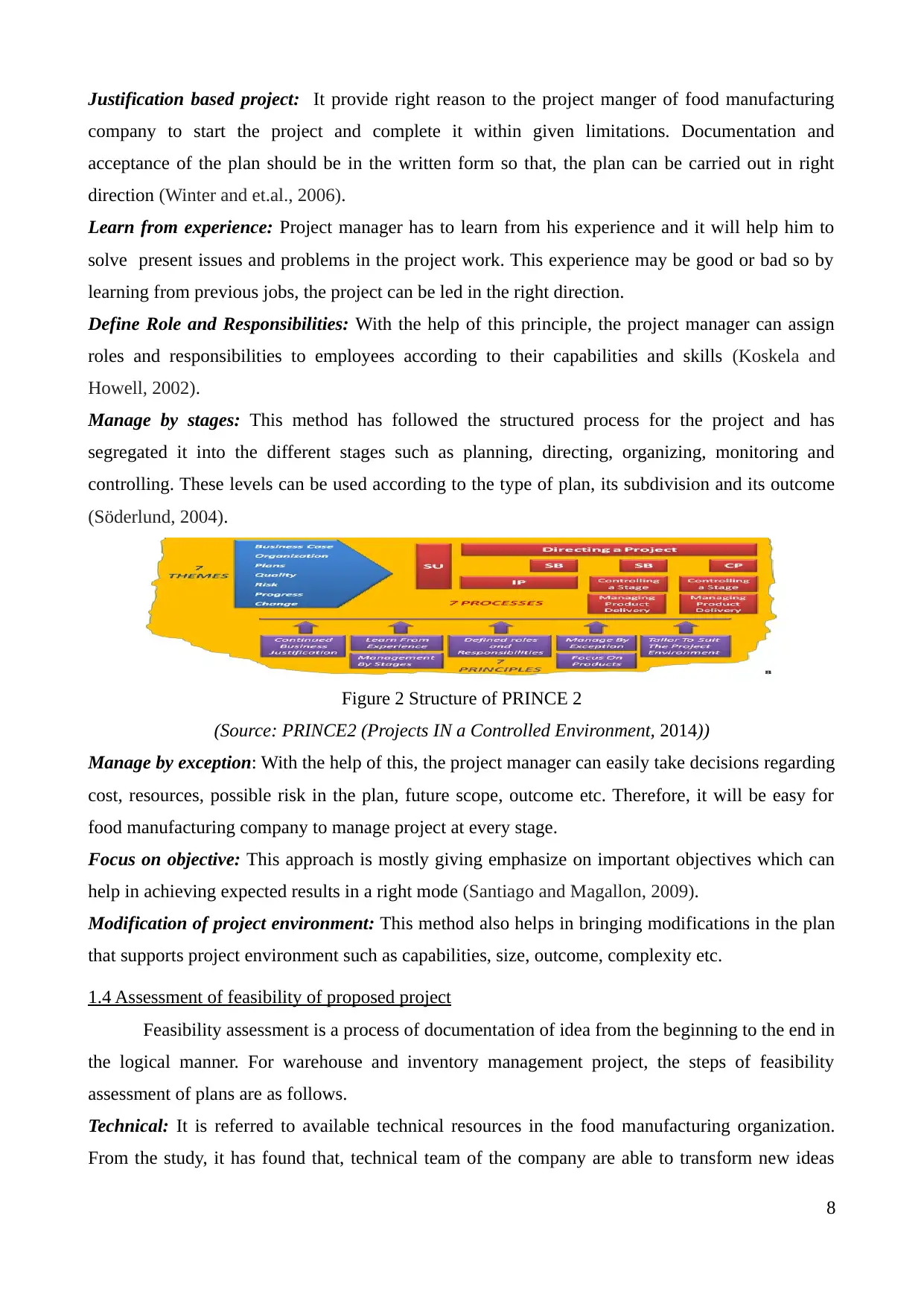
Justification based project: It provide right reason to the project manger of food manufacturing
company to start the project and complete it within given limitations. Documentation and
acceptance of the plan should be in the written form so that, the plan can be carried out in right
direction (Winter and et.al., 2006).
Learn from experience: Project manager has to learn from his experience and it will help him to
solve present issues and problems in the project work. This experience may be good or bad so by
learning from previous jobs, the project can be led in the right direction.
Define Role and Responsibilities: With the help of this principle, the project manager can assign
roles and responsibilities to employees according to their capabilities and skills (Koskela and
Howell, 2002).
Manage by stages: This method has followed the structured process for the project and has
segregated it into the different stages such as planning, directing, organizing, monitoring and
controlling. These levels can be used according to the type of plan, its subdivision and its outcome
(Söderlund, 2004).
Figure 2 Structure of PRINCE 2
(Source: PRINCE2 (Projects IN a Controlled Environment, 2014))
Manage by exception: With the help of this, the project manager can easily take decisions regarding
cost, resources, possible risk in the plan, future scope, outcome etc. Therefore, it will be easy for
food manufacturing company to manage project at every stage.
Focus on objective: This approach is mostly giving emphasize on important objectives which can
help in achieving expected results in a right mode (Santiago and Magallon, 2009).
Modification of project environment: This method also helps in bringing modifications in the plan
that supports project environment such as capabilities, size, outcome, complexity etc.
1.4 Assessment of feasibility of proposed project
Feasibility assessment is a process of documentation of idea from the beginning to the end in
the logical manner. For warehouse and inventory management project, the steps of feasibility
assessment of plans are as follows.
Technical: It is referred to available technical resources in the food manufacturing organization.
From the study, it has found that, technical team of the company are able to transform new ideas
8
company to start the project and complete it within given limitations. Documentation and
acceptance of the plan should be in the written form so that, the plan can be carried out in right
direction (Winter and et.al., 2006).
Learn from experience: Project manager has to learn from his experience and it will help him to
solve present issues and problems in the project work. This experience may be good or bad so by
learning from previous jobs, the project can be led in the right direction.
Define Role and Responsibilities: With the help of this principle, the project manager can assign
roles and responsibilities to employees according to their capabilities and skills (Koskela and
Howell, 2002).
Manage by stages: This method has followed the structured process for the project and has
segregated it into the different stages such as planning, directing, organizing, monitoring and
controlling. These levels can be used according to the type of plan, its subdivision and its outcome
(Söderlund, 2004).
Figure 2 Structure of PRINCE 2
(Source: PRINCE2 (Projects IN a Controlled Environment, 2014))
Manage by exception: With the help of this, the project manager can easily take decisions regarding
cost, resources, possible risk in the plan, future scope, outcome etc. Therefore, it will be easy for
food manufacturing company to manage project at every stage.
Focus on objective: This approach is mostly giving emphasize on important objectives which can
help in achieving expected results in a right mode (Santiago and Magallon, 2009).
Modification of project environment: This method also helps in bringing modifications in the plan
that supports project environment such as capabilities, size, outcome, complexity etc.
1.4 Assessment of feasibility of proposed project
Feasibility assessment is a process of documentation of idea from the beginning to the end in
the logical manner. For warehouse and inventory management project, the steps of feasibility
assessment of plans are as follows.
Technical: It is referred to available technical resources in the food manufacturing organization.
From the study, it has found that, technical team of the company are able to transform new ideas
8
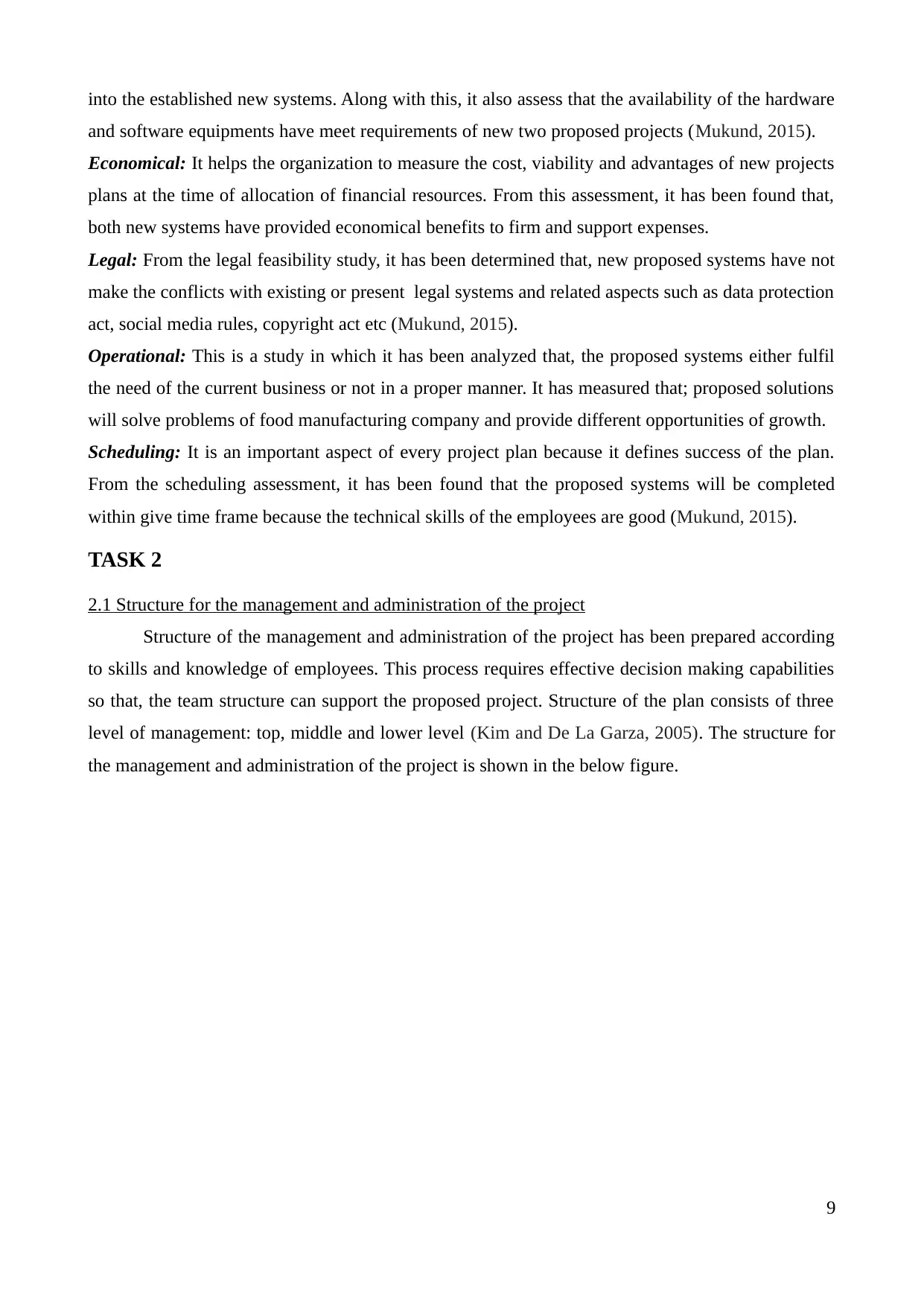
into the established new systems. Along with this, it also assess that the availability of the hardware
and software equipments have meet requirements of new two proposed projects (Mukund, 2015).
Economical: It helps the organization to measure the cost, viability and advantages of new projects
plans at the time of allocation of financial resources. From this assessment, it has been found that,
both new systems have provided economical benefits to firm and support expenses.
Legal: From the legal feasibility study, it has been determined that, new proposed systems have not
make the conflicts with existing or present legal systems and related aspects such as data protection
act, social media rules, copyright act etc (Mukund, 2015).
Operational: This is a study in which it has been analyzed that, the proposed systems either fulfil
the need of the current business or not in a proper manner. It has measured that; proposed solutions
will solve problems of food manufacturing company and provide different opportunities of growth.
Scheduling: It is an important aspect of every project plan because it defines success of the plan.
From the scheduling assessment, it has been found that the proposed systems will be completed
within give time frame because the technical skills of the employees are good (Mukund, 2015).
TASK 2
2.1 Structure for the management and administration of the project
Structure of the management and administration of the project has been prepared according
to skills and knowledge of employees. This process requires effective decision making capabilities
so that, the team structure can support the proposed project. Structure of the plan consists of three
level of management: top, middle and lower level (Kim and De La Garza, 2005). The structure for
the management and administration of the project is shown in the below figure.
9
and software equipments have meet requirements of new two proposed projects (Mukund, 2015).
Economical: It helps the organization to measure the cost, viability and advantages of new projects
plans at the time of allocation of financial resources. From this assessment, it has been found that,
both new systems have provided economical benefits to firm and support expenses.
Legal: From the legal feasibility study, it has been determined that, new proposed systems have not
make the conflicts with existing or present legal systems and related aspects such as data protection
act, social media rules, copyright act etc (Mukund, 2015).
Operational: This is a study in which it has been analyzed that, the proposed systems either fulfil
the need of the current business or not in a proper manner. It has measured that; proposed solutions
will solve problems of food manufacturing company and provide different opportunities of growth.
Scheduling: It is an important aspect of every project plan because it defines success of the plan.
From the scheduling assessment, it has been found that the proposed systems will be completed
within give time frame because the technical skills of the employees are good (Mukund, 2015).
TASK 2
2.1 Structure for the management and administration of the project
Structure of the management and administration of the project has been prepared according
to skills and knowledge of employees. This process requires effective decision making capabilities
so that, the team structure can support the proposed project. Structure of the plan consists of three
level of management: top, middle and lower level (Kim and De La Garza, 2005). The structure for
the management and administration of the project is shown in the below figure.
9
⊘ This is a preview!⊘
Do you want full access?
Subscribe today to unlock all pages.

Trusted by 1+ million students worldwide
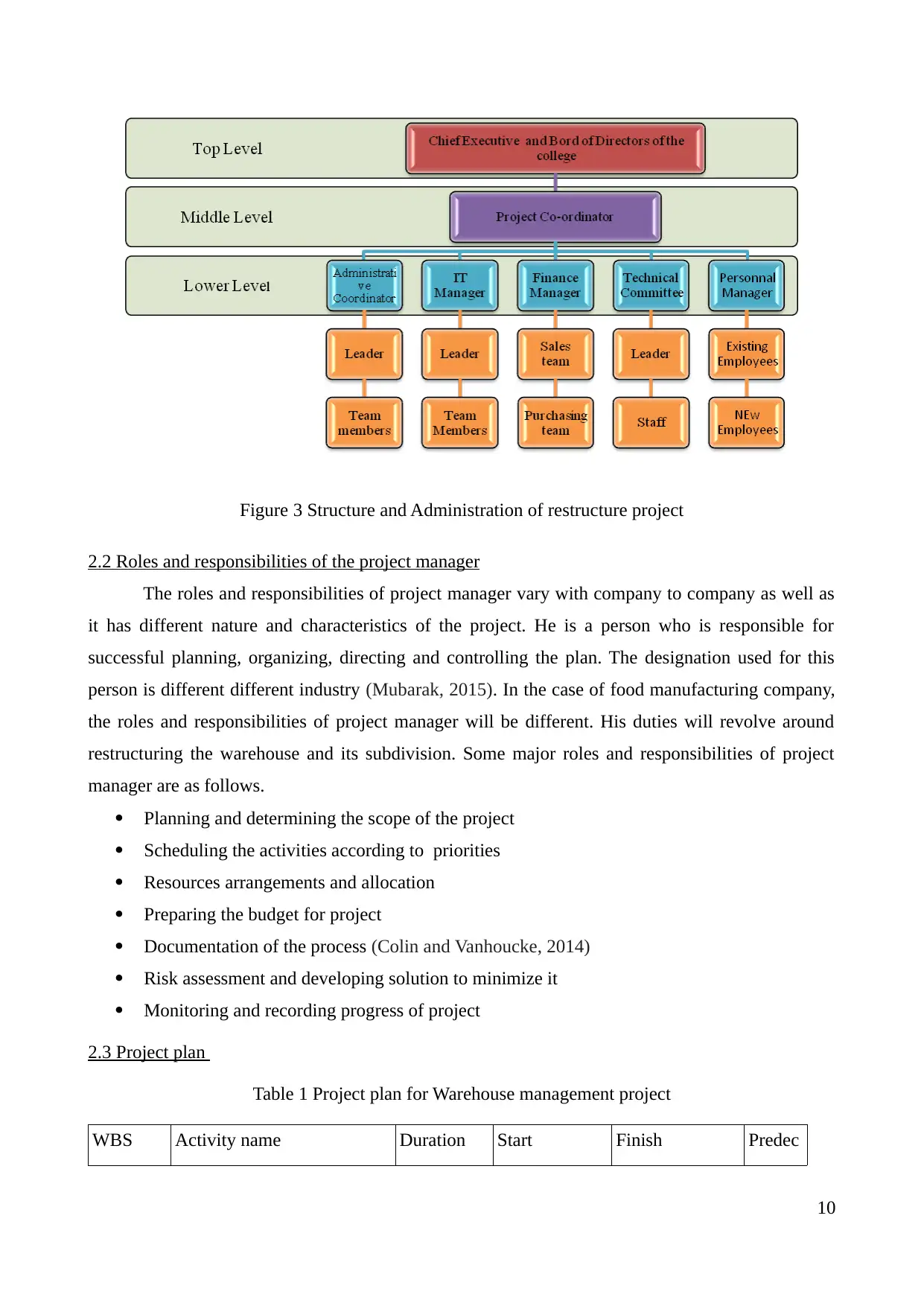
Figure 3 Structure and Administration of restructure project
2.2 Roles and responsibilities of the project manager
The roles and responsibilities of project manager vary with company to company as well as
it has different nature and characteristics of the project. He is a person who is responsible for
successful planning, organizing, directing and controlling the plan. The designation used for this
person is different different industry (Mubarak, 2015). In the case of food manufacturing company,
the roles and responsibilities of project manager will be different. His duties will revolve around
restructuring the warehouse and its subdivision. Some major roles and responsibilities of project
manager are as follows.
Planning and determining the scope of the project
Scheduling the activities according to priorities
Resources arrangements and allocation
Preparing the budget for project
Documentation of the process (Colin and Vanhoucke, 2014)
Risk assessment and developing solution to minimize it
Monitoring and recording progress of project
2.3 Project plan
Table 1 Project plan for Warehouse management project
WBS Activity name Duration Start Finish Predec
10
2.2 Roles and responsibilities of the project manager
The roles and responsibilities of project manager vary with company to company as well as
it has different nature and characteristics of the project. He is a person who is responsible for
successful planning, organizing, directing and controlling the plan. The designation used for this
person is different different industry (Mubarak, 2015). In the case of food manufacturing company,
the roles and responsibilities of project manager will be different. His duties will revolve around
restructuring the warehouse and its subdivision. Some major roles and responsibilities of project
manager are as follows.
Planning and determining the scope of the project
Scheduling the activities according to priorities
Resources arrangements and allocation
Preparing the budget for project
Documentation of the process (Colin and Vanhoucke, 2014)
Risk assessment and developing solution to minimize it
Monitoring and recording progress of project
2.3 Project plan
Table 1 Project plan for Warehouse management project
WBS Activity name Duration Start Finish Predec
10
Paraphrase This Document
Need a fresh take? Get an instant paraphrase of this document with our AI Paraphraser
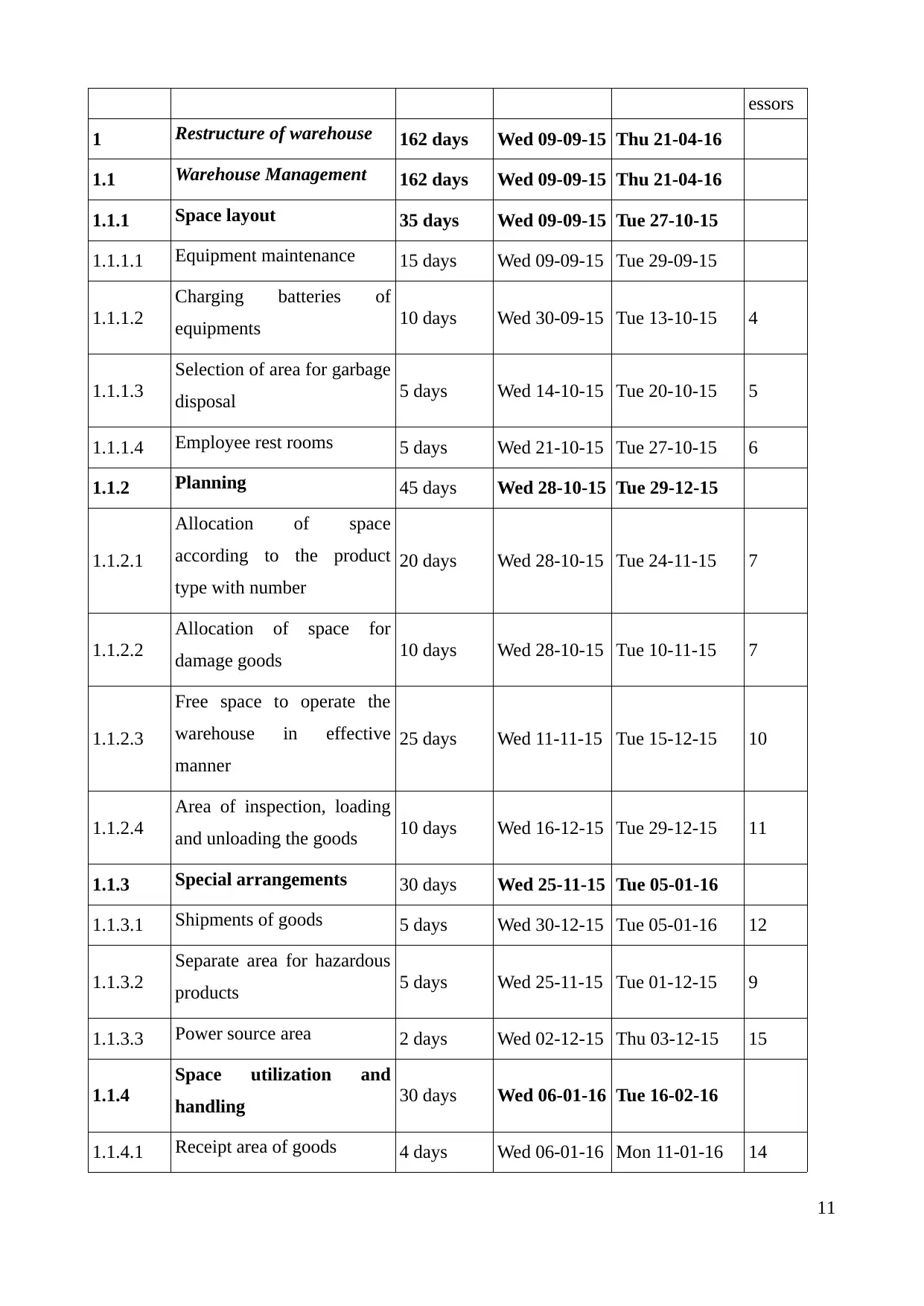
essors
1 Restructure of warehouse 162 days Wed 09-09-15 Thu 21-04-16
1.1 Warehouse Management 162 days Wed 09-09-15 Thu 21-04-16
1.1.1 Space layout 35 days Wed 09-09-15 Tue 27-10-15
1.1.1.1 Equipment maintenance 15 days Wed 09-09-15 Tue 29-09-15
1.1.1.2
Charging batteries of
equipments 10 days Wed 30-09-15 Tue 13-10-15 4
1.1.1.3
Selection of area for garbage
disposal 5 days Wed 14-10-15 Tue 20-10-15 5
1.1.1.4 Employee rest rooms 5 days Wed 21-10-15 Tue 27-10-15 6
1.1.2 Planning 45 days Wed 28-10-15 Tue 29-12-15
1.1.2.1
Allocation of space
according to the product
type with number
20 days Wed 28-10-15 Tue 24-11-15 7
1.1.2.2
Allocation of space for
damage goods 10 days Wed 28-10-15 Tue 10-11-15 7
1.1.2.3
Free space to operate the
warehouse in effective
manner
25 days Wed 11-11-15 Tue 15-12-15 10
1.1.2.4
Area of inspection, loading
and unloading the goods 10 days Wed 16-12-15 Tue 29-12-15 11
1.1.3 Special arrangements 30 days Wed 25-11-15 Tue 05-01-16
1.1.3.1 Shipments of goods 5 days Wed 30-12-15 Tue 05-01-16 12
1.1.3.2
Separate area for hazardous
products 5 days Wed 25-11-15 Tue 01-12-15 9
1.1.3.3 Power source area 2 days Wed 02-12-15 Thu 03-12-15 15
1.1.4
Space utilization and
handling 30 days Wed 06-01-16 Tue 16-02-16
1.1.4.1 Receipt area of goods 4 days Wed 06-01-16 Mon 11-01-16 14
11
1 Restructure of warehouse 162 days Wed 09-09-15 Thu 21-04-16
1.1 Warehouse Management 162 days Wed 09-09-15 Thu 21-04-16
1.1.1 Space layout 35 days Wed 09-09-15 Tue 27-10-15
1.1.1.1 Equipment maintenance 15 days Wed 09-09-15 Tue 29-09-15
1.1.1.2
Charging batteries of
equipments 10 days Wed 30-09-15 Tue 13-10-15 4
1.1.1.3
Selection of area for garbage
disposal 5 days Wed 14-10-15 Tue 20-10-15 5
1.1.1.4 Employee rest rooms 5 days Wed 21-10-15 Tue 27-10-15 6
1.1.2 Planning 45 days Wed 28-10-15 Tue 29-12-15
1.1.2.1
Allocation of space
according to the product
type with number
20 days Wed 28-10-15 Tue 24-11-15 7
1.1.2.2
Allocation of space for
damage goods 10 days Wed 28-10-15 Tue 10-11-15 7
1.1.2.3
Free space to operate the
warehouse in effective
manner
25 days Wed 11-11-15 Tue 15-12-15 10
1.1.2.4
Area of inspection, loading
and unloading the goods 10 days Wed 16-12-15 Tue 29-12-15 11
1.1.3 Special arrangements 30 days Wed 25-11-15 Tue 05-01-16
1.1.3.1 Shipments of goods 5 days Wed 30-12-15 Tue 05-01-16 12
1.1.3.2
Separate area for hazardous
products 5 days Wed 25-11-15 Tue 01-12-15 9
1.1.3.3 Power source area 2 days Wed 02-12-15 Thu 03-12-15 15
1.1.4
Space utilization and
handling 30 days Wed 06-01-16 Tue 16-02-16
1.1.4.1 Receipt area of goods 4 days Wed 06-01-16 Mon 11-01-16 14
11
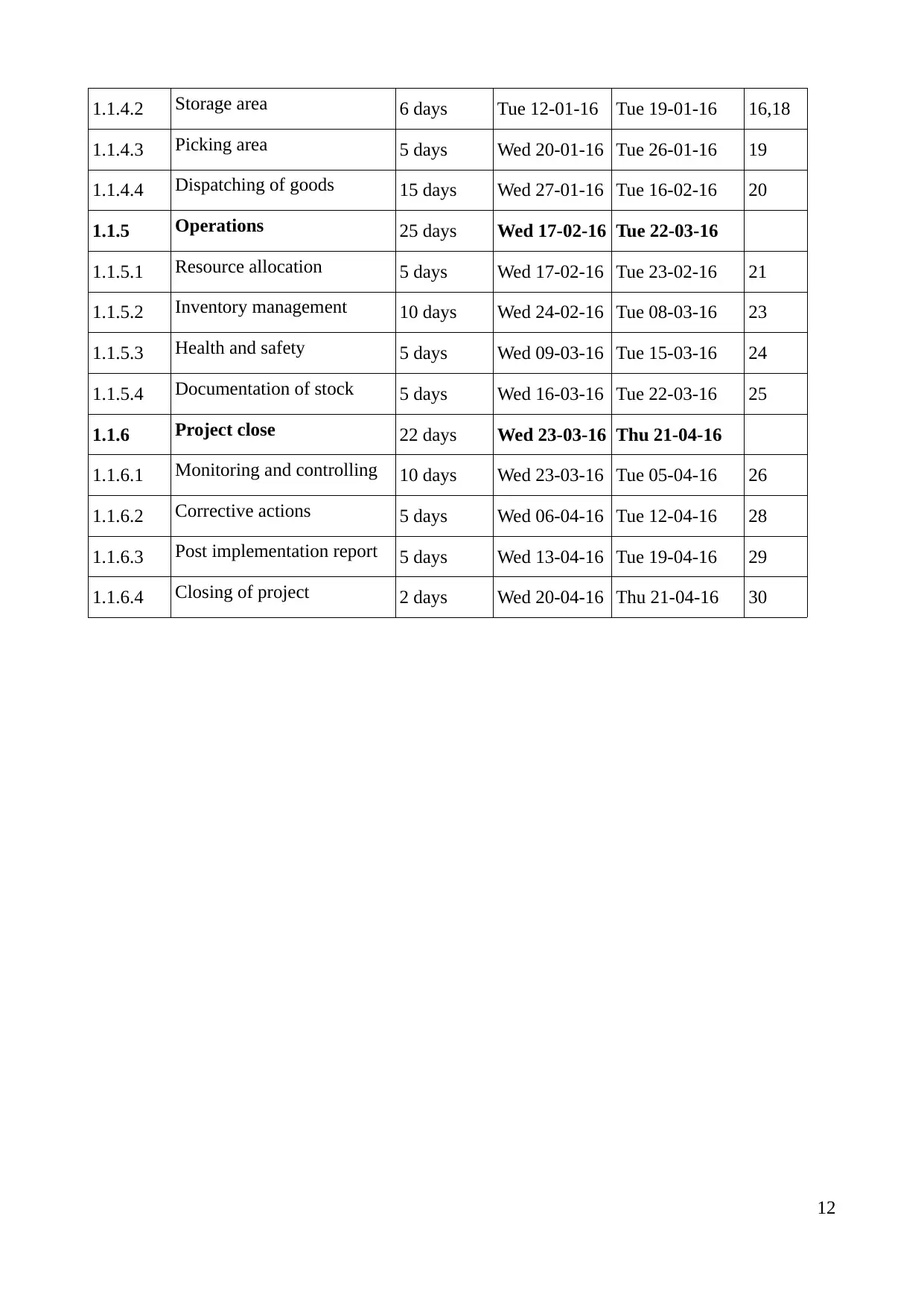
1.1.4.2 Storage area 6 days Tue 12-01-16 Tue 19-01-16 16,18
1.1.4.3 Picking area 5 days Wed 20-01-16 Tue 26-01-16 19
1.1.4.4 Dispatching of goods 15 days Wed 27-01-16 Tue 16-02-16 20
1.1.5 Operations 25 days Wed 17-02-16 Tue 22-03-16
1.1.5.1 Resource allocation 5 days Wed 17-02-16 Tue 23-02-16 21
1.1.5.2 Inventory management 10 days Wed 24-02-16 Tue 08-03-16 23
1.1.5.3 Health and safety 5 days Wed 09-03-16 Tue 15-03-16 24
1.1.5.4 Documentation of stock 5 days Wed 16-03-16 Tue 22-03-16 25
1.1.6 Project close 22 days Wed 23-03-16 Thu 21-04-16
1.1.6.1 Monitoring and controlling 10 days Wed 23-03-16 Tue 05-04-16 26
1.1.6.2 Corrective actions 5 days Wed 06-04-16 Tue 12-04-16 28
1.1.6.3 Post implementation report 5 days Wed 13-04-16 Tue 19-04-16 29
1.1.6.4 Closing of project 2 days Wed 20-04-16 Thu 21-04-16 30
12
1.1.4.3 Picking area 5 days Wed 20-01-16 Tue 26-01-16 19
1.1.4.4 Dispatching of goods 15 days Wed 27-01-16 Tue 16-02-16 20
1.1.5 Operations 25 days Wed 17-02-16 Tue 22-03-16
1.1.5.1 Resource allocation 5 days Wed 17-02-16 Tue 23-02-16 21
1.1.5.2 Inventory management 10 days Wed 24-02-16 Tue 08-03-16 23
1.1.5.3 Health and safety 5 days Wed 09-03-16 Tue 15-03-16 24
1.1.5.4 Documentation of stock 5 days Wed 16-03-16 Tue 22-03-16 25
1.1.6 Project close 22 days Wed 23-03-16 Thu 21-04-16
1.1.6.1 Monitoring and controlling 10 days Wed 23-03-16 Tue 05-04-16 26
1.1.6.2 Corrective actions 5 days Wed 06-04-16 Tue 12-04-16 28
1.1.6.3 Post implementation report 5 days Wed 13-04-16 Tue 19-04-16 29
1.1.6.4 Closing of project 2 days Wed 20-04-16 Thu 21-04-16 30
12
⊘ This is a preview!⊘
Do you want full access?
Subscribe today to unlock all pages.

Trusted by 1+ million students worldwide
1 out of 22
Related Documents
Your All-in-One AI-Powered Toolkit for Academic Success.
+13062052269
info@desklib.com
Available 24*7 on WhatsApp / Email
![[object Object]](/_next/static/media/star-bottom.7253800d.svg)
Unlock your academic potential
Copyright © 2020–2025 A2Z Services. All Rights Reserved. Developed and managed by ZUCOL.





